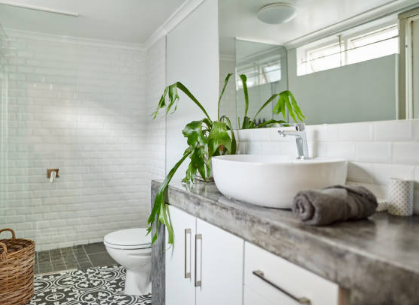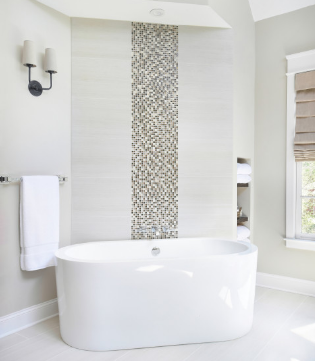What to Consider When Choosing a Bathroom Vanity

5 Bold Sofa Colors to Bring Your Living Room to Life
January 13, 2025
5 Ways to Create the Perfect Summer Bedroom
January 16, 2025Buying a new bathroom vanity is as simple as measuring your space and choosing a prefabricated unit online or in store. You’ll get a certain number of drawers with hardware, space for one or two sinks, and usually a countertop. Installing a custom vanity is more costly and requires the involvement of professionals such as designers, contractors, carpenters, and plumbers. It will be unique, and you can choose the drawer configuration, color, hardware, and fixtures. Whichever route you choose, here are a few things to keep in mind when considering buying a new vanity for your bathroom.
1. Consider Your Space
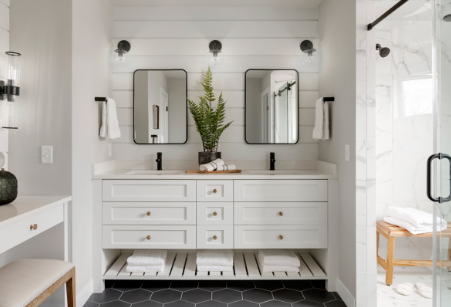
Before you fall in love with a particular dresser, measure the area of the bathroom where you will be installing the dresser, keeping in mind the depth, height, and length of the dresser. A large wall in a master bathroom may house a 60-inch vanity with lots of storage space and multiple sinks, while a small powder room may only accommodate a single-sink vanity with less storage, or a console vanity with one sink and little or no storage. For rooms between these sizes, a medium-sized vanity (48 to 60 inches wide) may be just right and can typically accommodate two sinks.
When deciding where to place your dresser, pay attention to the location of doors, windows, electrical outlets and switches, pipe connections, and mirrors (or where you want these elements to be).
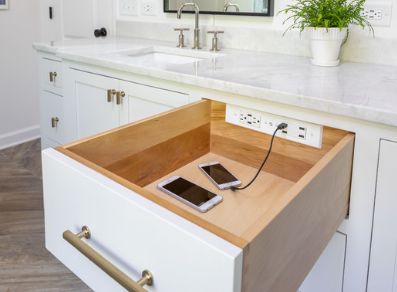
Some designers and homeowners have integrated electrical outlets into their dressers for hair dryers and other accessories. If you want to do this, make sure you or your electrician check local regulations to make sure this is allowed.
In some larger spaces, it makes sense to have two vanities. If you have little vanity space but want more storage space, consider shelves or other cabinets. If one sink is sufficient, make sure there is enough space on the counter for toiletries.
2. Consider Who Will Be Using It
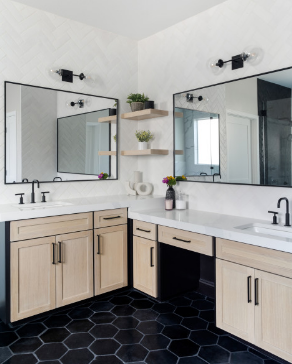
When it comes to the size, style, finish, and functionality of your dresser, realistically consider what the dresser is for. Not everyone needs two sinks, but if more than one child is going to use it, there must usually be two. For a spa-style master bath, consider a double sink and vanity with granite, marble-looking quartz, or actual marble countertops. Keep in mind that marble occasionally needs to be sealed. If wheelchair access is important, make sure the vanity is at least 32 inches wide and has space for wheelchair users to roll in to use the sink.
3. Decide What Type of Storage You Need
Think about what items you don’t mind putting on the counter and what toiletries, bath products, and hair care products you want to store in a drawer or cabinet. The storage needs of the dresser in the powder room will be different from the storage needs of the master bathroom or children’s bathroom.
A guest bathroom vanity may not need two sinks or a lot of storage space, but ample countertop space is always appreciated.
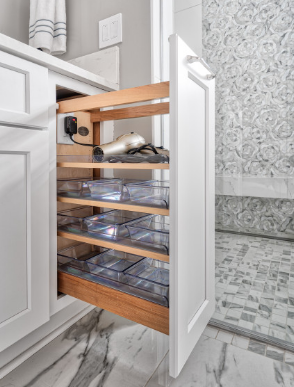
Vanity drawers and shelves keep countertops from getting cluttered, and you can choose from a variety of drawer sizes for maximum versatility. Soft-close doors and drawer organizers are handy features. Pull-out shelves are convenient and give you easy access to hair dryers, curling irons, and other accessories.
4. Choose a Style
Once you’ve decided on the size and storage options for your dresser, you’ll need to decide on a style. To do this, consider the architecture and décor of your home. For example, a dresser with a shaker-style cabinet is perfect for a craftsman house or a home with transitional décor.
The sleek floating vanity is perfect for both modern and contemporary homes. Medieval-style vanities may have wooden slats and tapered knobs, or have integrated handles but no hardware for a clean look.
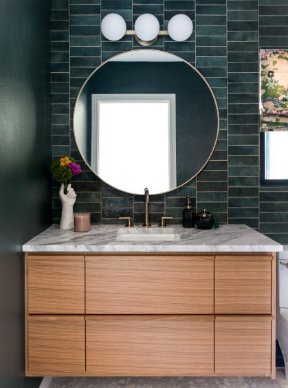
A floating vanity is wall-mounted and can make the space feel bigger. Keep in mind that floating vanities that are high above the ground are easier to clean than those that are just a few inches above the ground.
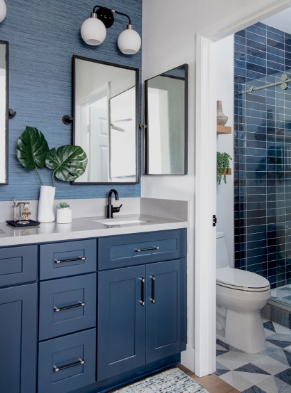
If there are colored tiles and floors in the bathroom, then a dresser painted in a similar color is a great companion. Many ready-made dressers that have been painted are available. You can also paint a unit yourself, or you can work with a custom cabinet maker or designer to choose a color and have it painted by a professional.
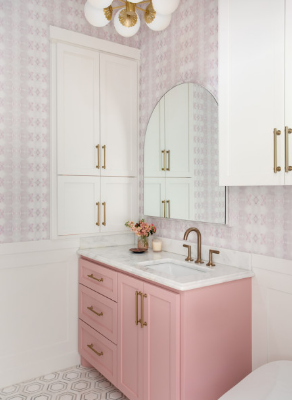
Freestanding dressers are just that – they sit on the floor like a piece of furniture and are fastened to the wall with mounting screws. They can accommodate single or double sinks and can be simple or more refined.
5. Choose Materials and Finishes
Dressers are available in a variety of materials, including hardwood, engineered wood, laminate, and melamine. If you buy a ready-made product, your choice of materials and countertops may be limited, which makes it easier for you to make a decision. For some vanities, countertops must be purchased separately.
Materials for countertops include quartz, granite, marble, laminate, concrete, wood, melamine, and other engineered solid surfaces. Keep in mind that certain counter materials, such as granite and marble, occasionally need to be sealed to keep them waterproof.
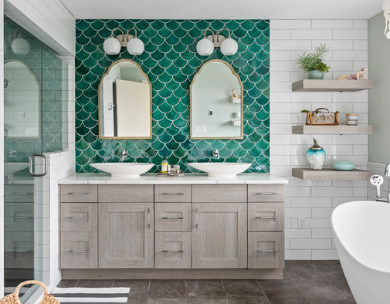
A custom dresser gives you a range of styles, materials, and other features to choose from, but it tends to be more expensive than buying a pre-made dresser. A skilled cabinet maker or craftsman can make materials such as melamine look like wood, which can save costs.
6. Select the Drawer Configuration and Hardware
If you have the space, a dresser with a variety of drawer sizes is ideal. The combination of cabinets and drawers of various sizes can store both small and large items. Decide if you need an open cubicle for towels and other items. As mentioned earlier, a custom-made dresser can have the exact configuration you want.
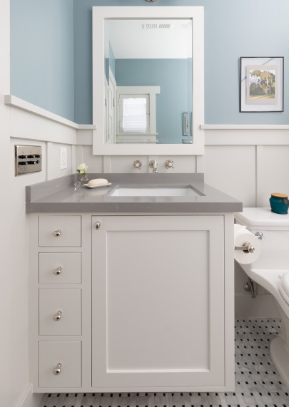
Even a small dresser in a compact space can hold a lot of supplies in cabinets and drawers.
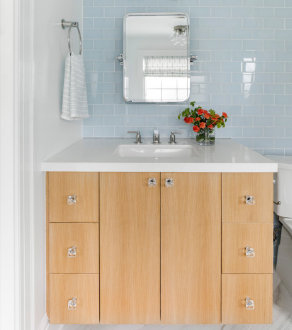
Decorate your new dresser with knobs and handles that reflect the personality of your home. Start by choosing a finish. Polished chrome and brushed nickel are classic, while black hardware is suited to modern farmhouse and industrial styles. The glass knobs add a bit of charm and can be paired with vintage and Victorian-inspired décor.
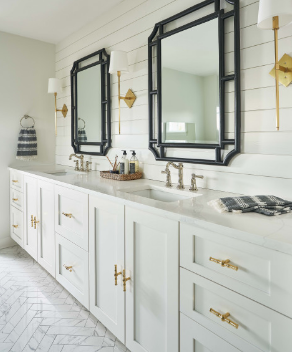
Gold hardware accessories are all the rage. Brushed brass adds a modern touch, while polished bronze lends itself to a rustic style.
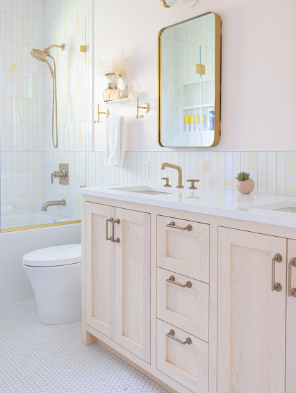
Knobs and handles come in a variety of shapes and configurations. You’ll find basic round and modern square knobs, slender vertical or horizontal handles, and more.
7. Look at the Sink Options
In addition to deciding on one or two sinks, you also need to consider the style of the sink. recessed, meaning the sink is below the surface and the edge is suspended over the counter; Undermount, which means that the entire sink is installed under the counter; and containers, which means that the sink is like a bowl on the counter. If you’re limited on space, but you want two people to be able to wash at the same time, a wider trough sink with two taps may be a good option.
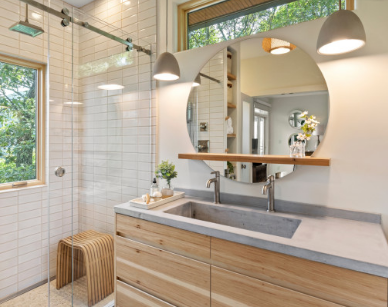
Container sinks can be the focal point of bathroom design. Since it takes up more space on the vanity surface than the built-in or undercounter version, make sure there’s enough counter space for toiletries and other bathroom accessories.
8. Install Faucets and Fixtures
Countertop faucets are mounted on a vanity or sink ledge and are connected to the water pipe under the sink. Wall-mounted faucets mounted on the wall above the vanity are often more difficult and costly to install.
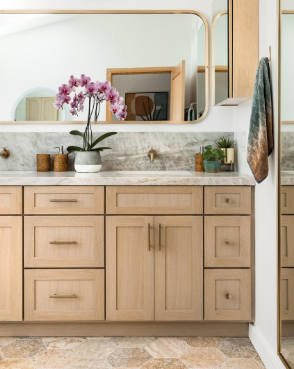
Prefabricated vanities for deck mounting fixtures will have one or three pre-drilled holes in the countertop. These holes can accommodate a central faucet, where the nozzle and hot and cold water handles are all in one, or suitable for a wide range of faucets, where the nozzle and handle are separated. A dresser with a single hole accommodates a faucet with a nozzle and a single handle or lever.
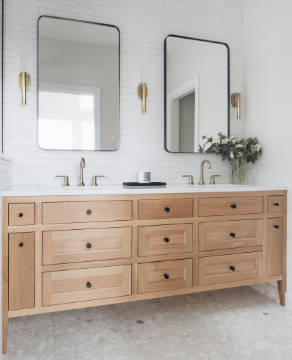
When choosing a faucet, be sure to pay attention to the height and range of the nozzle. A faucet that is too low can be difficult to use, and too high can cause water to splash outside the sink. The extension of the nozzle should extend to the middle or so of the sink. Nozzle styles are available in a variety of options, with finishes including polished, brushed, or matte.


